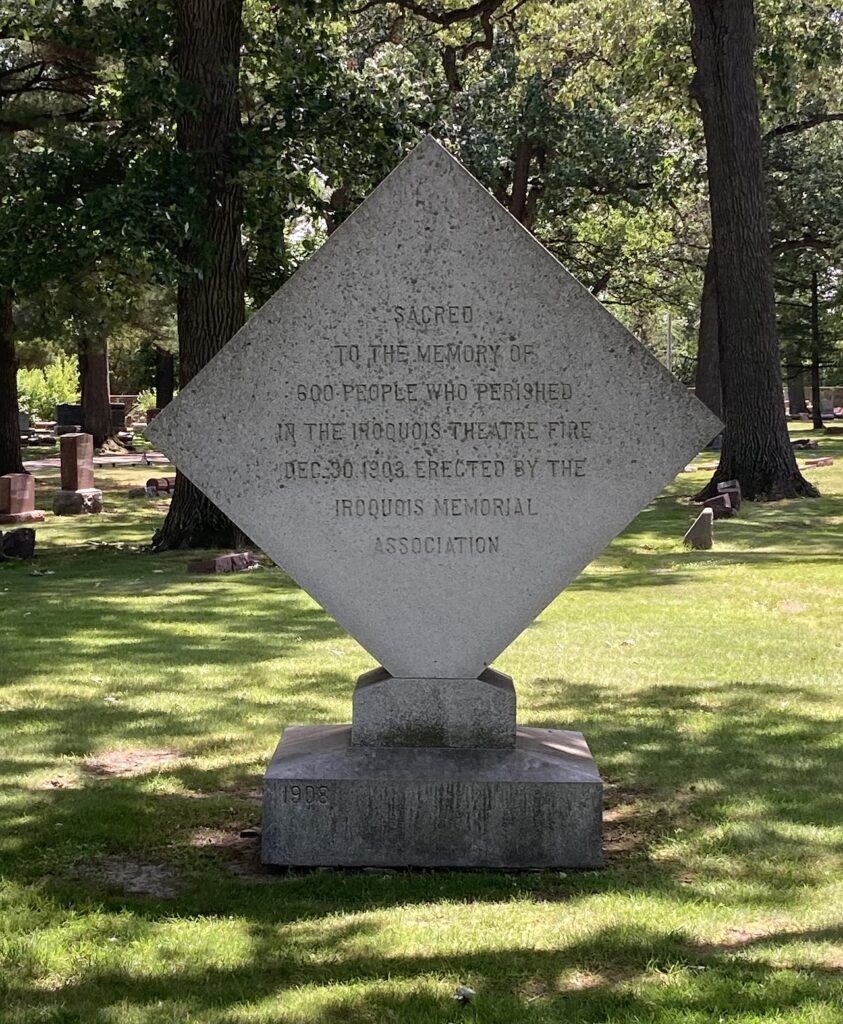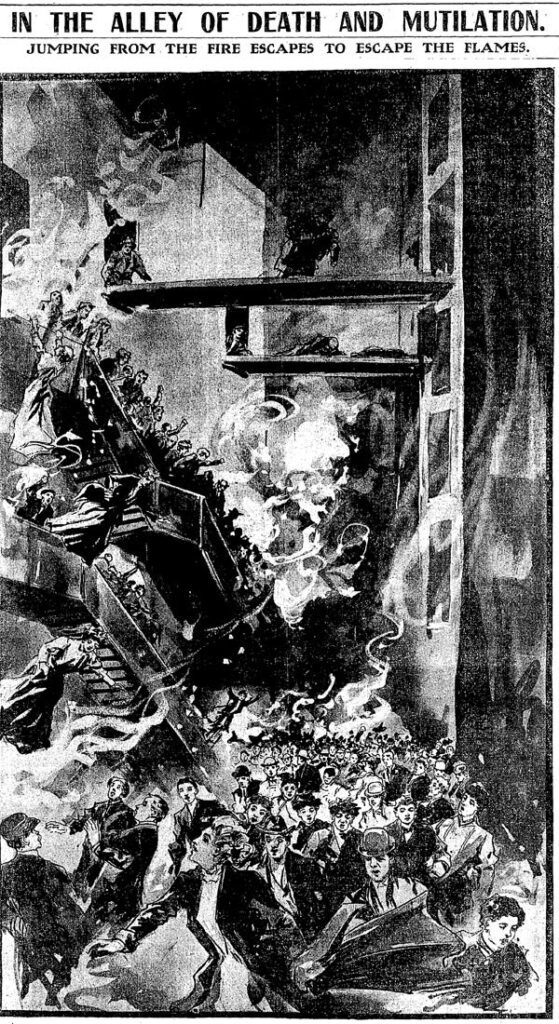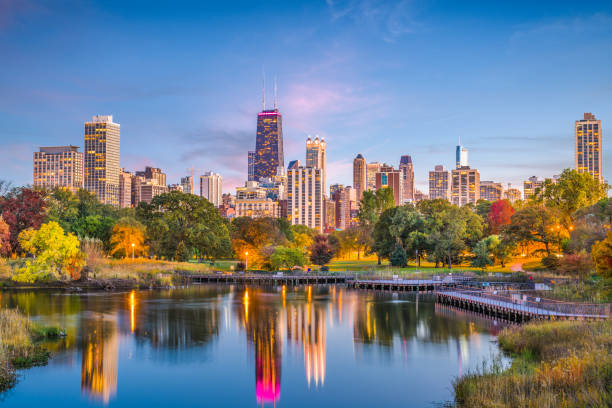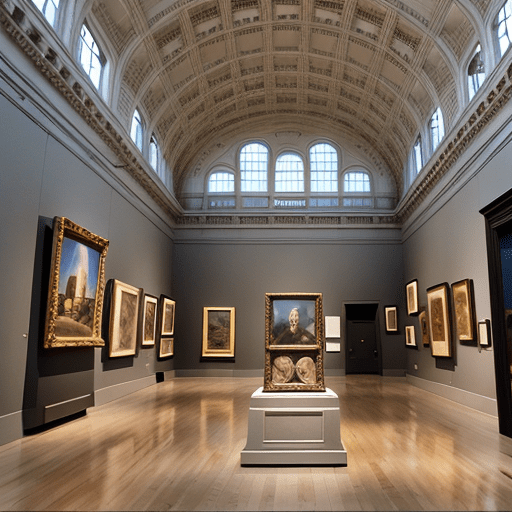The Haunting Tale of Death Alley in Chicago
Death Alley is a name in Chicago that evokes chilling stories from the city’s past. Known for the tragic Iroquois Theatre fire of 1903, which claimed hundreds of lives, this alley in Chicago carries the weight of history within its confines. Constructed with the promise of being “absolutely fireproof,” the Iroquois Theatre on Randolph Street became the site of one of the deadliest fire disasters in American history during its first and only show, ‘Mr. Bluebeard.’
Today, Death Alley stands as a somber reminder of the past, attracting those interested in its haunting legacy and the significant impact it had on building and fire safety codes across the country. As we explore the origins of Death Alley and delve into stories of the Iroquois Theatre, this article aims to shed light on the alley’s transformation over time and the paranormal reports that continue to intrigue both locals and visitors alike.
The Origins of Death Alley

The alley harbors a poignant history directly tied to the Iroquois Theatre, constructed in 1903. This location’s past is marked by a series of events that led to its infamous nickname:
Construction and Promises:
-
- The Iroquois Theatre was erected in 1903, with advertisements boldly claiming it to be fireproof.
- It was touted as the pinnacle of elegance and safety, with construction costs exceeding one million dollars, a significant sum at the time.
- Despite the assurances of being “absolutely fireproof,” the theatre opened its doors on December 30, 1903, only to be engulfed in flames during its first show.
- The aftermath was grim; the alley alongside the theatre was utilized for the morbid necessity of stacking the bodies of victims, which led to the monikers “The Alley of Death” or “The Alley of Death and Mutilation.”
- Transformation Over Time:
- Today, the alley stands as an inconspicuous side street, primarily used by pedestrians and serving as the stage door for the Nederlander Theatre.
- Its history, though not visibly prominent, remains a haunting reminder of the past events that shaped its reputation.
The Iroquois Theatre Fire of 1903
On December 30, 1903, the Iroquois Theatre in Chicago was the scene of a catastrophic fire during a matinee performance of ‘Mr. Bluebeard,’ starring Eddie Foy. This tragedy, resulting in over 600 fatalities, stands as the deadliest theater fire and single-building fire in U.S. history by the number of deaths. The fire began when a broken arc light ignited muslin curtains, rapidly spreading due to flammable stage props and backdrops. Despite the theatre’s billing as “absolutely fireproof,” numerous safety deficiencies contributed to the high death toll:
- Ignition and Spread:
- A spark from a stage light set nearby drapery ablaze.
- The asbestos fire curtain, intended to contain the fire, failed to lower properly.
- Evacuation Failures:
- Over 2,000 attendees, far exceeding the theatre’s capacity, faced locked or inward-opening exit doors.
- Lack of illuminated exit signs and emergency lighting plunged the theater into darkness, exacerbating the panic.
- Fatal Outcomes:
- The largest death toll occurred at the base of stairways and in the alley behind the theater, known thereafter as ‘Death Alley,’ where victims fell or were crushed.
- Inadequate fire safety measures, such as a lack of fire alarms or sprinklers and obscured exits, significantly hampered evacuation efforts.

This event not only marked a dark day in Chicago’s history but also served as a catalyst for sweeping changes in building and fire safety codes nationwide, aiming to prevent such tragedies from recurring.
Impact on Building and Fire Safety Codes
In the wake of the Iroquois Theatre fire, a comprehensive overhaul of building and fire safety codes was initiated, marking a pivotal moment in regulatory history. These changes were not only confined to Chicago but had a ripple effect across the United States and internationally, setting new standards for public safety in buildings, particularly in theaters.
Key Reforms in Building and Fire Safety Codes:
- Exit Doors: Legislation now mandated that all theater doors must open outwards, facilitating quicker evacuation during emergencies.
- Fire Curtains: A requirement for steel fire curtains replaced the previous, less reliable materials, to better contain fires.
- Labeling and Panic Bars: Fire exits had to be clearly labeled, and the introduction of panic bars enabled doors to be easily opened in a rush.
- Sprinkler Systems and Fire Alarms: Updated codes enforced the installation of sprinkler systems and connected fire alarms to alert occupants and fire services at the earliest sign of danger.
- Occupancy Limits and Aisle Standards: Stricter controls on the number of tickets sold (eliminating ‘standing’ tickets) and specifications for wider aisles ensured safer and more orderly evacuations.
- Fireproofing Measures: New regulations required fireproofing solutions to be applied to scenery and other potentially flammable materials.
The Iroquois Theatre fire served as a stark reminder of the catastrophic consequences of inadequate safety measures. The subsequent reforms have undeniably saved countless lives, demonstrating the importance of rigorous safety standards and constant vigilance in public building management.
Modern-Day Death Alley
Today, the area once marred by tragedy has transformed into a bustling passageway, known as Death Alley in Chicago or Couch Place, frequented by Chicago commuters, stagehands, and actors associated with the Nederlander Theatre. This theatre, situated at 24 W. Randolph Street in downtown Chicago, stands on the historical footprint of the Iroquois Theatre. Despite the complete rebuild and rebranding of the theater, it is said that the spirits of those who perished in the fire linger, with apparitions reportedly seen in the alley where victims were once tragically stacked.
- Current Use and Significance:
- Acts as a pedestrian passageway in central Chicago.
- Home to the Nederlander Theatre, a hub for Broadway in Chicago.
- Site of reported ghostly sightings linked to the 1903 Iroquois Theatre fire.
- Nederlander Theatre Highlights:
- Location: 24 W. Randolph Street, downtown Chicago.
- Currently hosting the acclaimed show ‘Hamilton’.
- Named after James M. Nederlander, a prominent figure in theater.
- Paranormal Reports:
- Recognized by Condé Nast Traveler as one of the “42 Most Haunted Places in the World”.
- Considered one of Illinois’ most haunted locations, with ongoing reports of ghostly apparitions.
The transformation of Death Alley into a lively thoroughfare and cultural site, alongside the Nederlander Theatre’s continued success, showcases the area’s resilience. Yet, the lingering tales of the past serve as a poignant reminder of its history.
Paranormal Activity in Death Alley

Paranormal activity in Death Alley has been a subject of intrigue and speculation, drawing attention from both skeptics and believers. Reports of unexplained phenomena have persisted, contributing to the alley’s eerie reputation:
- Sensory Experiences:
- Auditory Hallucinations: Visitors have reported hearing faint cries and whispers of names, echoing the tragic past of the alley.
- Olfactory Sensations: The distinct smell of smoke, reminiscent of the catastrophic fire, has been noted by several witnesses, despite the absence of any physical source.
- Tactile Encounters: There are accounts of individuals feeling touched or pushed by unseen forces, alongside experiences of phantom hands.
- Visual Apparitions:
- A notable encounter involved a stage manager who heard a voice warning, “smoke will kill you,” followed by the sighting of a woman dressed in a hoop skirt and a big hat, who vanished without a trace.
- Other reports include sightings of apparitions, believed to be the spirits of the 600 victims of the fire.
These experiences, ranging from the subtle to the startling, are attributed to the spirits of those who lost their lives in the tragic Iroquois Theatre fire. The persistence of these reports over time underscores the profound impact of the event on the collective memory and cultural fabric of Chicago, blending historical tragedy with contemporary paranormal lore.
The haunting legacy of Death Alley, with its origins deeply rooted in the catastrophic Iroquois Theatre fire of 1903, serves as a somber reminder of one of the darkest days in Chicago’s history. Through the exploration of the alley’s transformation over time and the modern-day significance that intertwines historical tragedy with ongoing paranormal reports, this article has illuminated the profound impact this event has had on both building safety regulations and cultural memory. It underscores the necessity of vigilant and rigorous safety standards, highlighting how the lessons learned from this tragedy have undoubtedly saved lives and reshaped public building management across the globe.
As Death Alley in Chicago continues to draw interest for its eerie reputation and as a symbol of resilience amidst tragedy, the stories of those affected by the Iroquois Theatre fire remain a poignant part of Chicago’s narrative. The reforms enacted in the wake of the disaster stand as a testament to the importance of learning from the past to safeguard the future. While the alley’s modern guise as a bustling passageway may mask its tragic past, the ghostly tales and the continuing interest in its haunting allure remind us of the undying memory of those lost and the enduring spirit of a city that rose from the ashes to foster safer communities everywhere.
FAQs
What was the name of the theater in Chicago that experienced a devastating fire?
The Iroquois Theatre in Chicago was the site of a tragic fire on December 30, 1903, during a packed performance with 1,700 attendees, resulting in 602 deaths and an additional 250 injuries.
How many casualties resulted from the fire at the Iroquois Theater?
The fire at the Iroquois Theater in Chicago on December 30, 1903, led to the loss of at least 602 lives, including many children.
Does the Iroquois Theater still exist today?
No, the Iroquois Theater does not exist today. It was reopened in 1904 under the name the Colonial and was eventually demolished in 1925.
Are the alleys in Chicago considered public property?
Yes, in Chicago, alleys are defined as public ways that provide access to the rear or side of lots or buildings and are not meant for continuous vehicular traffic. Alleys are public property, similar to streets, sidewalks, and other roads, and are available for public use.


